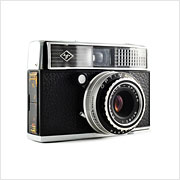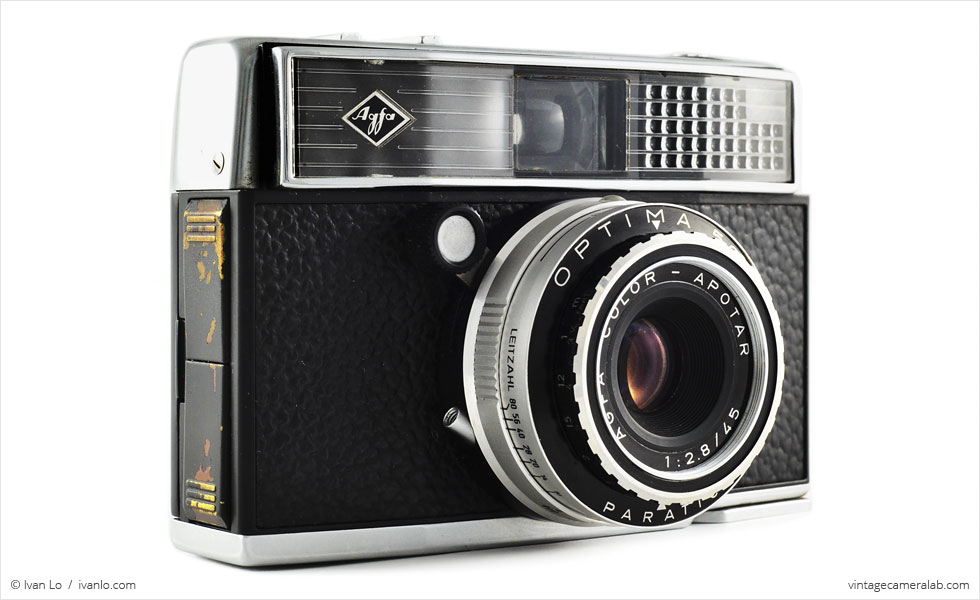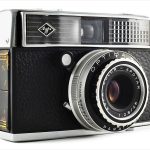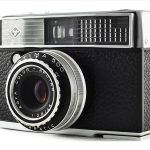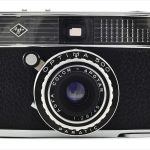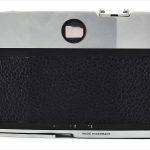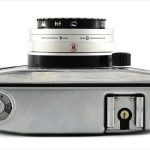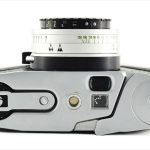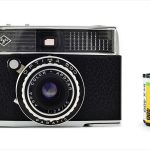Agfa Optima 500 Specifications
| Manufacturer: | Agfa AG |
| Origin: | West Germany |
| (modern day Germany) | |
| Made in: | West Germany |
| (modern day Germany) | |
| Introduced: | 1964 |
| Type: | Viewfinder |
| Format: | 135 Film |
| Dimensions: | 12.2 x 8.7 x 6.7 cm |
Agfa Optima 500 Overview
The Agfa Optima 500 is the second-to-last model in Agfa‘s Optima line and is the direct descendant of the very first mass-produced camera ever to feature automatic exposure: the original Agfa Optima. The Optima 500 is also unique because it was released in 1964 during the corporate merger of Belgium’s Gevaert Photo-Producten N.V. and Germany’s Agfa AG. At the time, Agfa AG was owned by pharmaceutical giant Bayer AG which eventually upped it’s 50% stake in Agfa-Gevaert N.V. to 100% and controlled the company until 1999.
The design of the Optima 500 is relatively unusual which contributes to the camera’s sleek, uncomplicated styling. The top plate’s only features are a hot shoe on one side and a film speed indicator on the other and transitions smoothly into the front housing of the viewfinder and selenium meter. The 45mm f/2.8 Color-Apotar lens features three focus zone settings and is mated to an automatically programmed shutter capable of speeds ranging from 1/30 to 1/500 seconds. Aperture can either be manually selected or left on “A” for auto (as seen above). The shutter release lever can be found just above the ten o’clock mark with a cable release socket at eight.
This is where conventional control placement ends and the eccentricity begins. The bottom is where most of the action happens beginning with a charming left-handed film advance lever that sits flush with the base. Next to the lever is the frame counter which is designed to be seen when the lens is pointing at one’s stomach. Under the frame counter is a black button that releases the film rewind crank so you can ready the camera for another roll of 35mm film. Last but not least, the latch for the film door can only be released by pressing simultaneously on the textured ends of two adjacent metal plates on the right hand side of the camera; not necessarily brilliant but definitely different.
Despite it being a relatively recent addition to my collection, the Agfa Optima 500 has quickly become one of my favorites with its curious layout and stylish, subtlely octagonal body. I confess that I didn’t know much about this camera when I bought it on a whim at an online charity auction but once I finally held it in my hands, I knew my gamble had paid off.
Find your very own Agfa Optima 500 on eBay.
McKeown, James M. and Joan C. McKeown’s Price Guide to Antique and Classic Cameras, 2001-2002. (Grantsburg, WI, USA: Centennial Photo Service, 2001), p 27.
